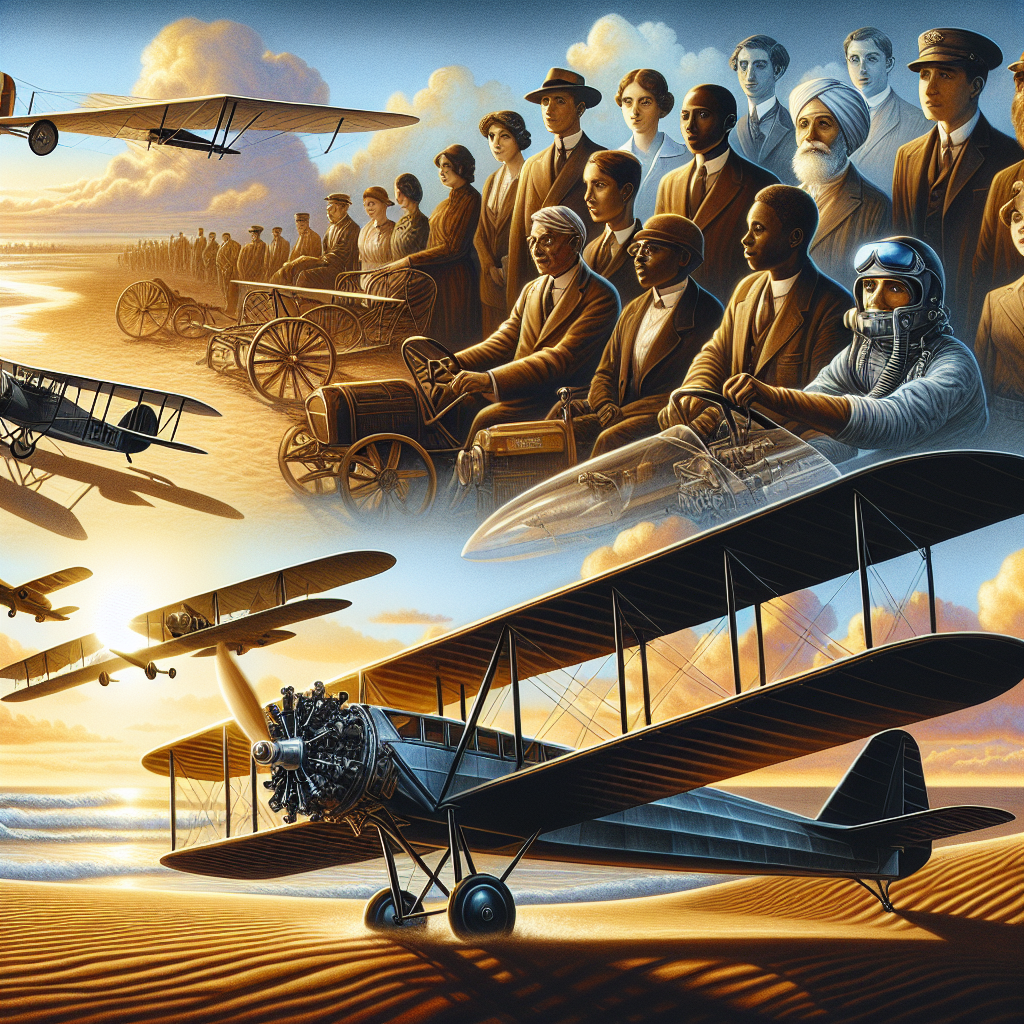From Kitty Hawk to the Jet Age: A Journey through the Evolution of Aviation
Aviation has come a long way since the Wright brothers made their historic flight in Kitty Hawk, North Carolina in 1903. The evolution of aviation has been a fascinating journey that has revolutionized the way we travel and explore the world. Let’s take a trip back in time and explore the key milestones that have shaped the aviation industry into what it is today.
The Pioneering Days: The Wright Brothers and Kitty Hawk
It all started with two brothers who had a dream of flying. Orville and Wilbur Wright’s remarkable accomplishment on December 17, 1903, marked the first successful powered flight in history. Their aircraft, the Wright Flyer, was a biplane with a wingspan of 12.3 meters and a top speed of 48 kilometers per hour. It only flew for 12 seconds, covering a distance of 36.5 meters, but it was a pivotal moment that set the stage for the future of aviation.
In case you want to relive the historic moment, check out this YouTube video showing a recreation of the Wright brothers’ first flight.
The Birth of Commercial Aviation: The Golden Age of Airships
Following the Wright brothers’ breakthrough, aviation soon took off on a larger scale. It was the era of airships, also known as dirigibles or zeppelins. These colossal aircraft were filled with lighter-than-air gas, allowing them to float in the sky. The most renowned airship of the time was the Graf Zeppelin, which offered luxurious transatlantic passenger flights.
However, the golden age of airships was short-lived. The infamous Hindenburg disaster in 1937, where the German airship caught fire and crashed while attempting to land, marked the end of an era. The tragedy highlighted the inherent dangers of airships and paved the way for a new era in aviation.
The Jet Age: Sleek Jets and Supersonic Travel
The introduction of jet engines revolutionized aviation in the 1950s. The first commercial jet airliner, the de Havilland Comet, took to the skies in 1952, significantly reducing travel time and making air travel more accessible to the masses. The Comet had a top speed of 805 kilometers per hour and could carry up to 36 passengers.
As jet technology advanced, so did the desire for faster and more efficient travel. The Concorde, a supersonic passenger jet, became the epitome of luxury and speed. With a maximum speed of over twice the speed of sound (Mach 2.04), the Concorde could fly from New York to London in just under 3.5 hours. Unfortunately, due to a combination of economic and environmental factors, the Concorde was retired in 2003, marking the end of supersonic passenger travel for the time being.
If you’re curious about the Concorde and its legendary status, here’s a YouTube video showcasing the awe-inspiring aircraft.
Modern Aviation: The Age of Efficiency and Innovation
Today, aviation continues to evolve at a rapid pace. Aircraft are becoming more fuel-efficient, quieter, and technologically advanced. With the rise of electric aviation, we may soon see a new era of sustainable flight.
Additionally, the development of unmanned aerial vehicles, commonly known as drones, has opened up a whole new world of possibilities. Drones are being used for various purposes, from aerial photography and videography to search and rescue missions.
The Future of Aviation: Flying Cars and Space Tourism
Looking ahead, the future of aviation is filled with exciting prospects. Companies like NASA and SpaceX are working towards making space tourism a reality. Imagine being able to take a trip to space and experience weightlessness firsthand!
Moreover, the concept of flying cars is no longer just a fantasy seen in science fiction movies. Companies like Uber and Airbus are investing in the development of flying taxi services, promising a new era of urban mobility.
The journey from Kitty Hawk to the Jet Age has been one of ingenuity, determination, and continuous innovation. It’s a testament to human curiosity and a constant desire to push the boundaries of what is possible. As we look to the future, one thing is certain: the evolution of aviation will never cease to amaze us.
Thank you for joining us on this journey through the evolution of aviation!



